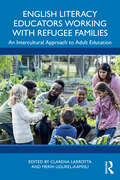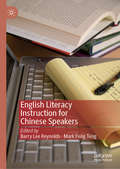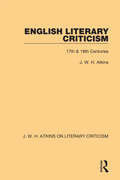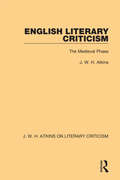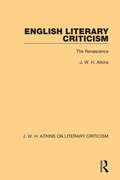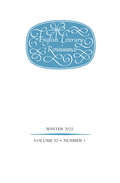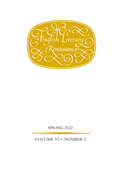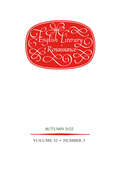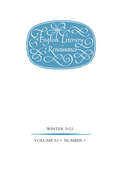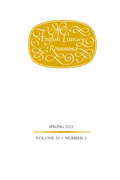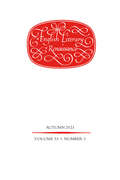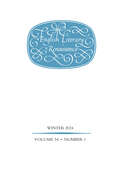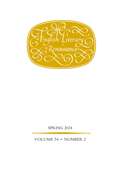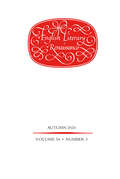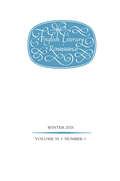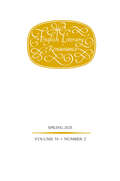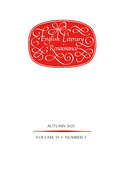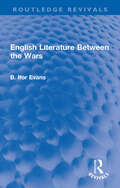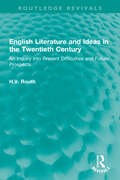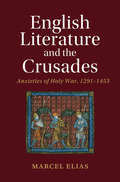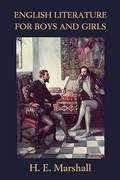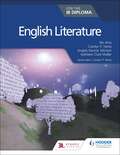- Table View
- List View
English Literacy Educators Working with Refugee Families: An Intercultural Approach to Adult Education
by Clarena Larrotta Merih Ugurel-KamisliEnglish Literacy Educators Working with Refugee Families highlights best practices for English literacy instruction when working with refugees in the United States. Given the global refugee crisis around the world, the topic of teaching language to refugees is of increasing importance. The volume addresses this pressing issue and provides valuable insights and tools for educators working with refugees and immigrants in a variety of programs.With contributions from authors who have experience teaching refugees, the book details innovative strategies and first-hand knowledge grounded in theory, research, and practice in adult education. Book contributors provide a review of the contexts for teaching refugees and illustrate the importance of implementing an intercultural communicative framework in the English literacy classroom.The book will be beneficial to pre-service teachers, students in undergraduate and graduate programs learning about adult literacy education, as well as educators and researchers interested in refugee education.
English Literacy Instruction for Chinese Speakers
by Mark Feng Teng Barry Lee ReynoldsWritten with an emphasis on instruction, policy, practice, and assessment, this book focuses on English literacy at the pre-primary/primary, secondary, and university level, and discusses literacy policies in the region. An easy-to-read, solidly grounded book, it offers practical, thought provoking resources for classroom teachers and educators. It notably features explanations of key literacy skills, up-to-date research findings, and classroom applications that are contextualized for mainland China, Hong Kong, Macau, and Taiwan. This book provides pre-service and in-service teachers, English classroom practitioners, language teacher educators, literacy researchers, and students in research/teacher training programs a core set of instructional techniques on how to incorporate literacy-related ideas into English language classrooms. A valuable pedagogical resource for teaching and learning L2/EFL literacy, this book also highlights discussions on language and literacy policies and new examples of actual classroom teachers that have put English literacy instruction into practice.
English Literary Criticism: 17th & 18th Centuries
by J. W. AtkinsOriginally published in 1951, this volume covers the transition period between the years of Renaissance influence and the dawn of 19th Century Romanticism. The book analyses the theories and judgments of various critics and their bearing on literary appreciation. The opening chapter concentrates on the account of French doctrines of the 17th Century which is essential as the necessary background of English critical activities for the best part of two centuries. Later chapters discuss the main lines of the development and the more significant critics.
English Literary Criticism: Romantic and Victorian
by Daniel Hoffman Samuel HynesFrom the book: This book concludes the Goldentree series of anthologies of English literary criticism. Together these collections cover three broad periods of literature: the Renaissance, the neo-classical period, and the nineteenth century. Literary historians are accustomed to divide the nineteenth century into two distinct periods, the Romantic Movement and the Victorian Era. With respect to literary criticism and the assumptions on which it is based, however, it is more accurate to consider the century as a single "post-classical" period...
English Literary Criticism: The Medieval Phase
by J. W. AtkinsIn England literary consciousness had its beginning in the middle ages, and this book, originally published in 1943, describes and illustrates the first phases of the growth of a tradition of criticism. It does not confine itself to writers whose interest was in the vernacular, for there was a larger European movement of which English criticism was a part. It embodied much of the ancient teaching, but it shows recurring efforts to arrive at the nature and art of poetry; it provides a key to contemporary literature and is of great help in understanding what really happened at the 16th Century Renaissance.
English Literary Criticism: The Renascence
by J. W. AtkinsOriginally published in 1947, this volume reviews the critical achievement at the Renaissance. It discusses the ideas of literature then current in England, as revealed in contemporary theorizing and judgments. The period has sometimes been dismissed as lacking great critics, and the critical works themselves have been described as elementary and remote, but, as this work shows, viewed in the light of what came before and after, those texts will be found to be of considerable interest and possess intrinsic and historical value. This book charts the course of the movement and the main findings and their significance in critical history. There is an emphasis to show the part payed by the medieval tradition, with its inheritance of post-classical and patristic doctrine; the lead given by 15th Century Italian and other Humanists and the no less important attempts of independent native writers to work out new artistic and dramatic theory of their own.
English Literary Renaissance, volume 52 number 1 (Winter 2022)
by English Literary RenaissanceThis is volume 52 issue 1 of English Literary Renaissance. English Literary Renaissance (ELR) is a leading journal for new research in Tudor and Stuart literature, including the Sidneys, Spenser, Shakespeare, Jonson, Donne, Milton, and their many contemporaries. In addition to critical work, ELR also publishes review essays and occasional editions of short significant manuscripts, such as letters, legal documents with literary relevance, and poetry.
English Literary Renaissance, volume 52 number 2 (Spring 2022)
by English Literary RenaissanceThis is volume 52 issue 2 of English Literary Renaissance. English Literary Renaissance (ELR) is a leading journal for new research in Tudor and Stuart literature, including the Sidneys, Spenser, Shakespeare, Jonson, Donne, Milton, and their many contemporaries. In addition to critical work, ELR also publishes review essays and occasional editions of short significant manuscripts, such as letters, legal documents with literary relevance, and poetry.
English Literary Renaissance, volume 52 number 3 (Autumn 2022)
by English Literary RenaissanceThis is volume 52 issue 3 of English Literary Renaissance. English Literary Renaissance (ELR) is a leading journal for new research in Tudor and Stuart literature, including the Sidneys, Spenser, Shakespeare, Jonson, Donne, Milton, and their many contemporaries. In addition to critical work, ELR also publishes review essays and occasional editions of short significant manuscripts, such as letters, legal documents with literary relevance, and poetry.
English Literary Renaissance, volume 53 number 1 (Winter 2023)
by English Literary RenaissanceThis is volume 53 issue 1 of English Literary Renaissance. English Literary Renaissance (ELR) is a leading journal for new research in Tudor and Stuart literature, including the Sidneys, Spenser, Shakespeare, Jonson, Donne, Milton, and their many contemporaries. In addition to critical work, ELR also publishes review essays and occasional editions of short significant manuscripts, such as letters, legal documents with literary relevance, and poetry.
English Literary Renaissance, volume 53 number 2 (Spring 2023)
by English Literary RenaissanceThis is volume 53 issue 2 of English Literary Renaissance. English Literary Renaissance (ELR) is a leading journal for new research in Tudor and Stuart literature, including the Sidneys, Spenser, Shakespeare, Jonson, Donne, Milton, and their many contemporaries. In addition to critical work, ELR also publishes review essays and occasional editions of short significant manuscripts, such as letters, legal documents with literary relevance, and poetry.
English Literary Renaissance, volume 53 number 3 (Autumn 2023)
by English Literary RenaissanceThis is volume 53 issue 3 of English Literary Renaissance. English Literary Renaissance (ELR) is a leading journal for new research in Tudor and Stuart literature, including the Sidneys, Spenser, Shakespeare, Jonson, Donne, Milton, and their many contemporaries. In addition to critical work, ELR also publishes review essays and occasional editions of short significant manuscripts, such as letters, legal documents with literary relevance, and poetry.
English Literary Renaissance, volume 54 number 1 (Winter 2024)
by English Literary RenaissanceThis is volume 54 issue 1 of English Literary Renaissance. English Literary Renaissance (ELR) is a leading journal for new research in Tudor and Stuart literature, including the Sidneys, Spenser, Shakespeare, Jonson, Donne, Milton, and their many contemporaries. In addition to critical work, ELR also publishes review essays and occasional editions of short significant manuscripts, such as letters, legal documents with literary relevance, and poetry.
English Literary Renaissance, volume 54 number 2 (Spring 2024)
by English Literary RenaissanceThis is volume 54 issue 2 of English Literary Renaissance. English Literary Renaissance (ELR) is a leading journal for new research in Tudor and Stuart literature, including the Sidneys, Spenser, Shakespeare, Jonson, Donne, Milton, and their many contemporaries. In addition to critical work, ELR also publishes review essays and occasional editions of short significant manuscripts, such as letters, legal documents with literary relevance, and poetry.
English Literary Renaissance, volume 54 number 3 (Autumn 2024)
by English Literary RenaissanceThis is volume 54 issue 3 of English Literary Renaissance. English Literary Renaissance (ELR) is a leading journal for new research in Tudor and Stuart literature, including the Sidneys, Spenser, Shakespeare, Jonson, Donne, Milton, and their many contemporaries. In addition to critical work, ELR also publishes review essays and occasional editions of short significant manuscripts, such as letters, legal documents with literary relevance, and poetry.
English Literary Renaissance, volume 55 number 1 (Winter 2025)
by English Literary RenaissanceThis is volume 55 issue 1 of English Literary Renaissance. English Literary Renaissance (ELR) is a leading journal for new research in Tudor and Stuart literature, including the Sidneys, Spenser, Shakespeare, Jonson, Donne, Milton, and their many contemporaries. In addition to critical work, ELR also publishes review essays and occasional editions of short significant manuscripts, such as letters, legal documents with literary relevance, and poetry.
English Literary Renaissance, volume 55 number 2 (Spring 2025)
by English Literary RenaissanceThis is volume 55 issue 2 of English Literary Renaissance. English Literary Renaissance (ELR) is a leading journal for new research in Tudor and Stuart literature, including the Sidneys, Spenser, Shakespeare, Jonson, Donne, Milton, and their many contemporaries. In addition to critical work, ELR also publishes review essays and occasional editions of short significant manuscripts, such as letters, legal documents with literary relevance, and poetry.
English Literary Renaissance, volume 55 number 3 (Autumn 2025)
by English Literary RenaissanceThis is volume 55 issue 3 of English Literary Renaissance. English Literary Renaissance (ELR) is a leading journal for new research in Tudor and Stuart literature, including the Sidneys, Spenser, Shakespeare, Jonson, Donne, Milton, and their many contemporaries. In addition to critical work, ELR also publishes review essays and occasional editions of short significant manuscripts, such as letters, legal documents with literary relevance, and poetry.
English Literature 1832-1890, Excluding the Novel
by Paul TurnerAnalysis of the work of the British writers of the period--all genres, including drama and children's literature, among others.
English Literature Between the Wars (Routledge Revivals)
by B. Ifor EvansFirst published in 1948, English Literature Between the Wars sets out to answer a question: to what extent did the years between the two wars constitute a period in literature? Its exploration leads the author to assess the changes in the reading public, and in the movement of taste. He is led to the conclusion that in the inter-war period some writers were aware that a crisis in civilization was taking place and that these were the more genuinely creative writers. Apart from a consideration of these general problems, the volume contains studies of E.M. Forster, James Joyce, Aldous Huxley, D. H. Lawrence, Virginia Woolf, and others. It also assesses the influence of war on the literature of the period, comments on the work of the younger writers, and adds a note on the theatre. Students of literature and history will find this book particularly interesting.
English Literature and Ideas in the Twentieth Century: An Inquiry into Present Difficulties and Future Prospects (Routledge Revivals)
by H.V. RouthEnglish Literature and Ideas in the Twentieth Century (1950) looks at the British pioneers of a new style of writing in the twentieth century. Handling new material in new ways, their experiments in technique and presentation are examined by the light of what was passing in their minds, and in the minds of their readers – attitudes, aspirations and dreams which are sometimes uncongenial, always unconventional.
English Literature and the Crusades: Anxieties of Holy War, 1291–1453 (Cambridge Studies in Medieval Literature)
by Marcel EliasThe period from the Mamlūk reconquest of Acre (1291) to the Ottoman siege of Constantinople (1453) witnessed the production of a substantial corpus of Middle English crusade romances. Marcel Elias places these romances in dialogue with multifarious European writings to offer a novel account of late medieval crusade culture: as ambivalent and self-critical, animated by tensions and debates, and fraught with anxiety. These romances uphold ideals of holy war while expressing anxieties about issues as diverse as God's endorsement of the crusading enterprise, the conversion of Christians to Islam, the sinfulness of crusaders, and the morality of violence. Reinvigorating debates in medieval postcolonialism, drawing on emotion studies, and excavating a rich multilingual archive, this book is a major contribution to the cultural history of the crusades. This title is part of the Flip it Open programme and may also be available open access. Check our website Cambridge Core for details.
English Literature for Boys and Girls
by H. E. Marshall John R. SkeltonA delightful introduction to the writers of English literature whose works hold the greatest appeal for the youthful reader. The life and personality of each author is given in outline, with enough material quoted from his works to give an idea of what he wrote. For most authors suggestions for further reading are included. The outline of historical background enables the young reader to grasp the connection between the literature and the life of the time. Excellent as a companion to a chronological study of English literature. Suitable for ages 12 and up.
English Literature for the IB Diploma
by Angela Stancar Johnson Nic Amy Kathleen Clare Waller Carolyn P. HenlyEverything you need to deliver a rich, concept-based approach for the new IB Diploma English Literature course. - Navigate seamlessly through all aspects of the syllabus with in-depth coverage of the new course structure and content- Investigate the three areas of exploration, concept connections and global issues in detail to help students become flexible, critical readers- Learn how to appreciate a variety of texts with a breadth of reading material and forms from a diverse pool of authors- Engaging activities are provided to test understanding of each topic and develop skills - guiding answers are available to check your responses- Identify opportunities to make connections across the syllabus, with explicit reference to TOK, EE and CAS
English Literature for the IB Diploma
by Angela Stancar Johnson Nic Amy Kathleen Clare Waller Carolyn P. HenlyEverything you need to deliver a rich, concept-based approach for the new IB Diploma English Literature course. - Navigate seamlessly through all aspects of the syllabus with in-depth coverage of the new course structure and content- Investigate the three areas of exploration, concept connections and global issues in detail to help students become flexible, critical readers- Learn how to appreciate a variety of texts with a breadth of reading material and forms from a diverse pool of authors- Engaging activities are provided to test understanding of each topic and develop skills - guiding answers are available to check your responses- Identify opportunities to make connections across the syllabus, with explicit reference to TOK, EE and CAS
